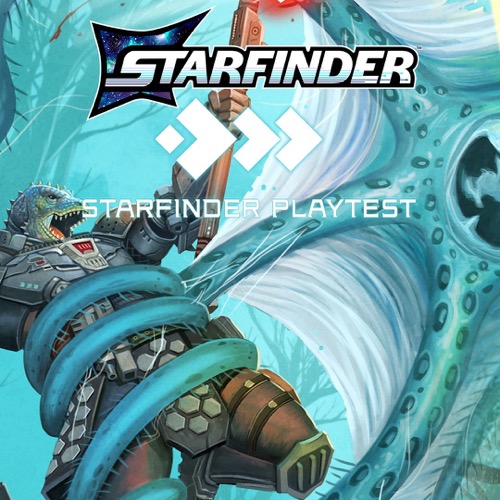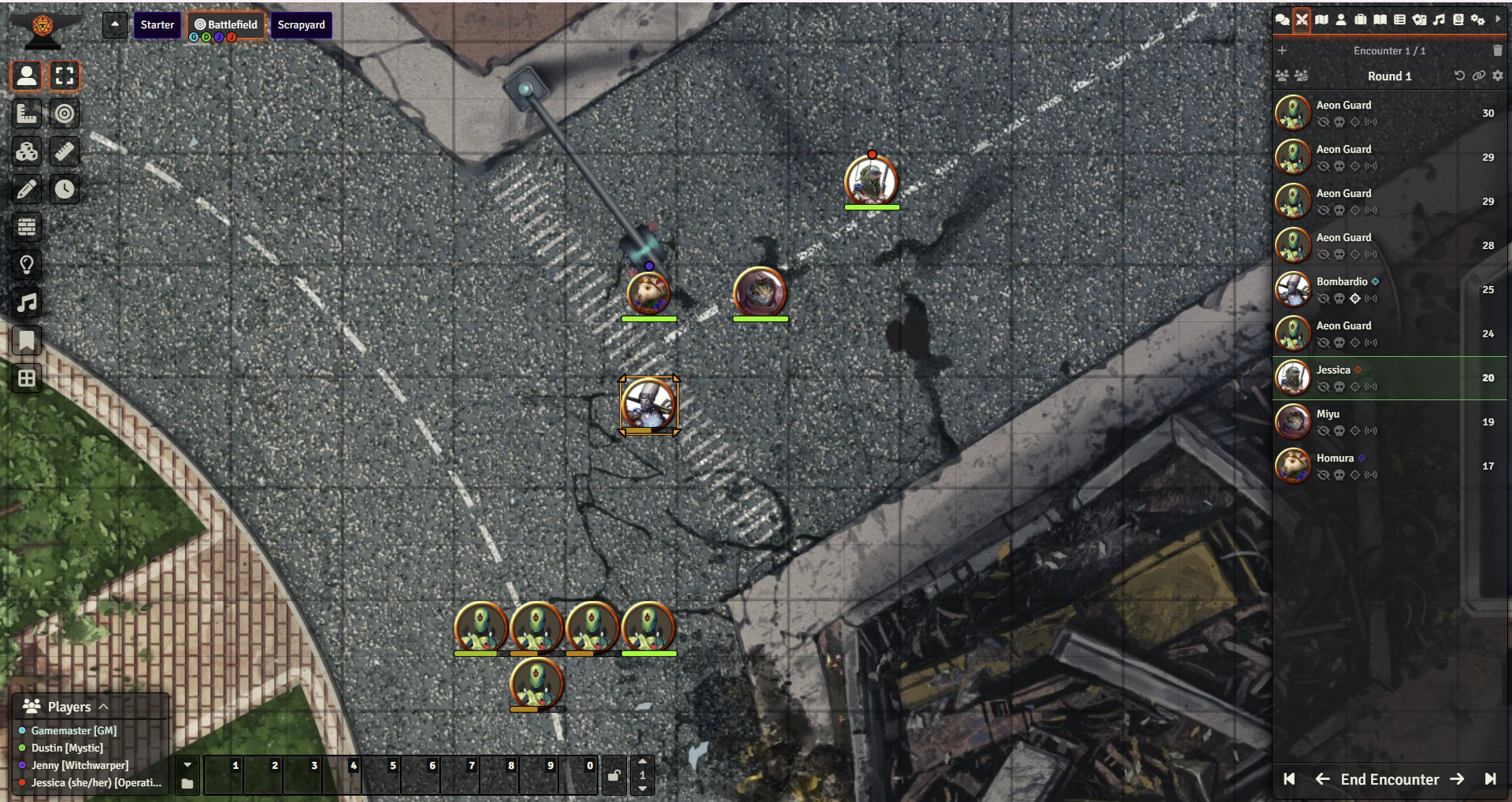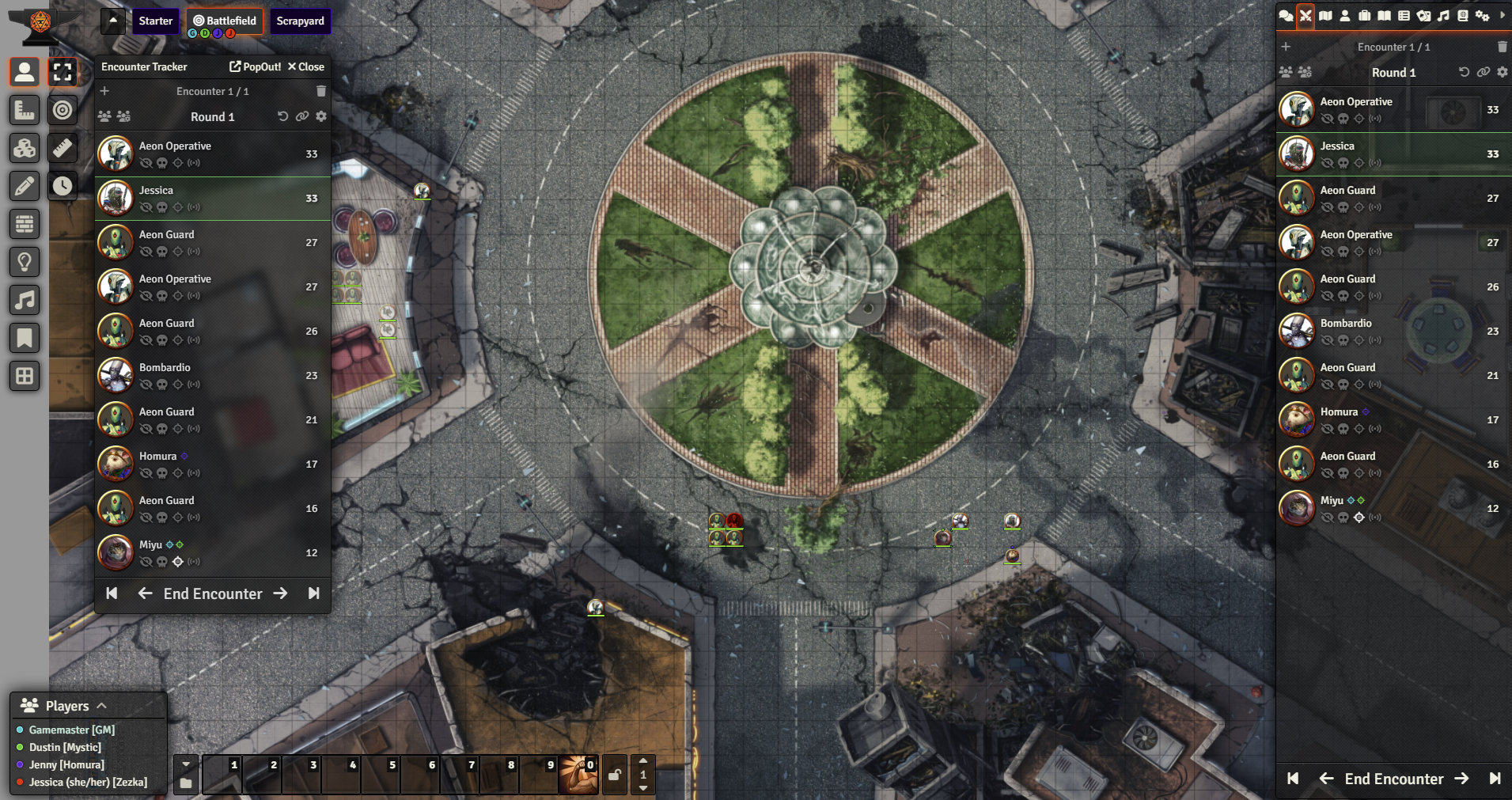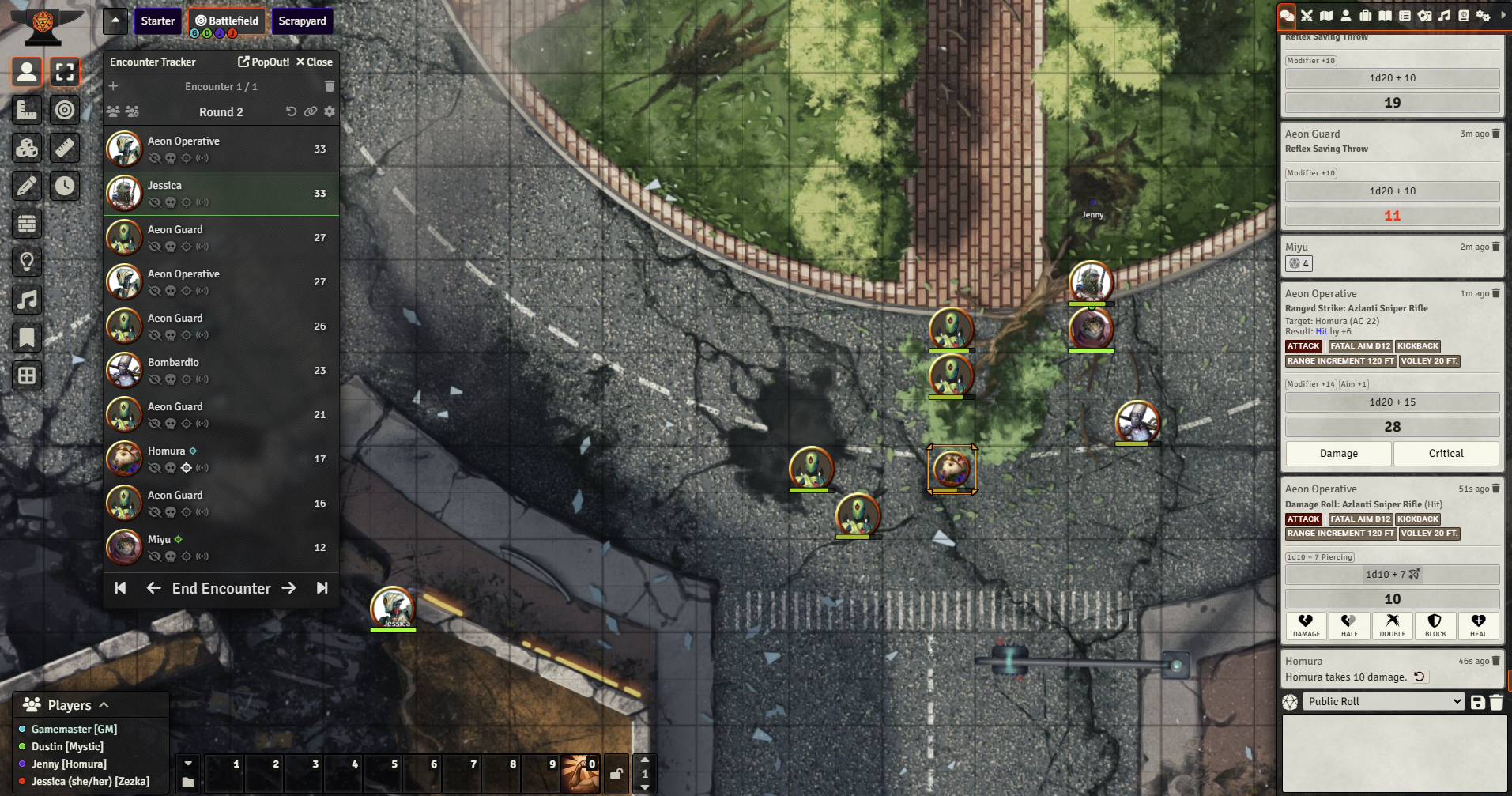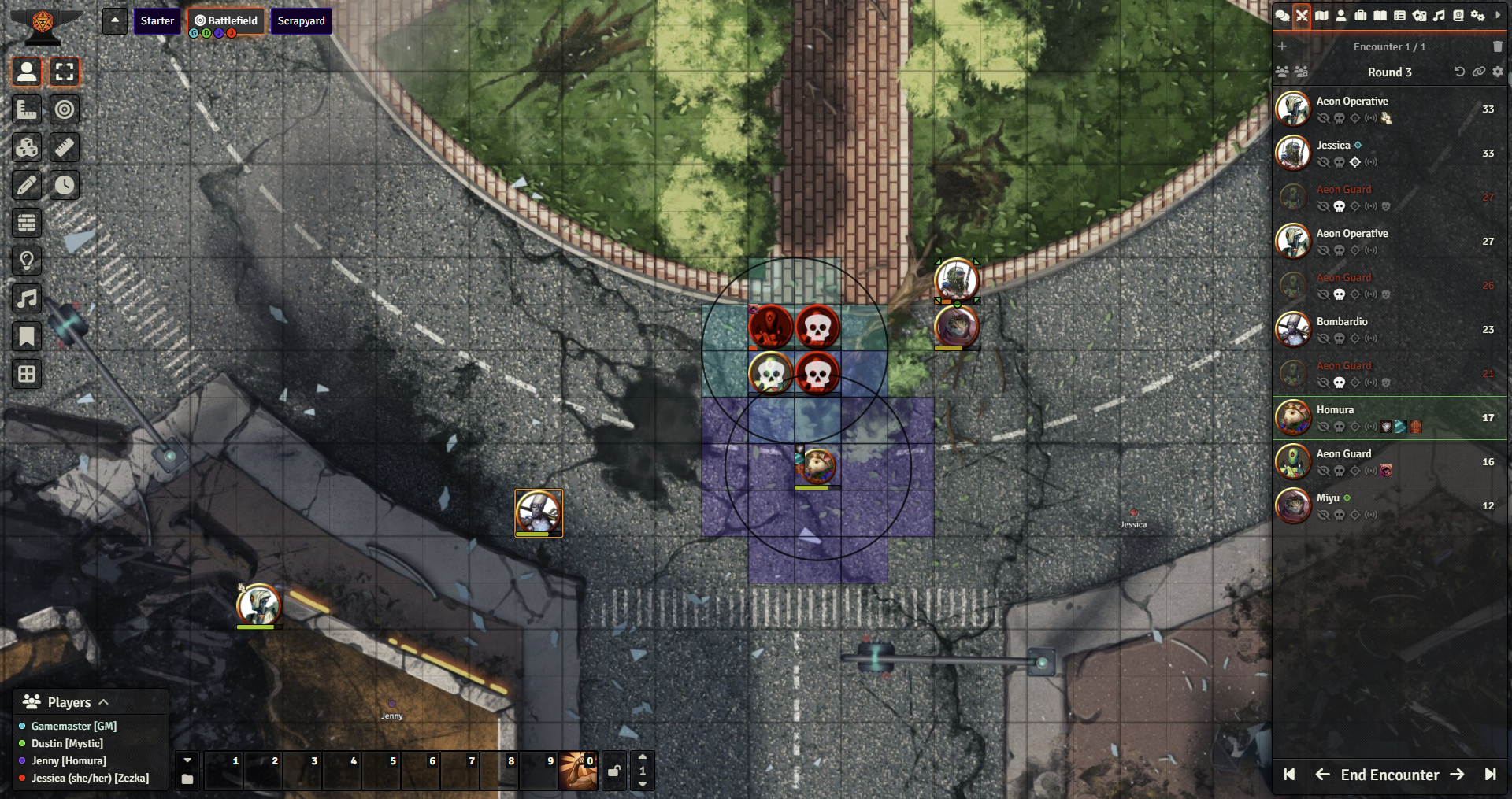Here’s a look behind the scenes at Paizo’s internal playtests.
Welcome to one of our first blogs following up on the recent announcement of Starfinder Second Edition! For those of you who don’t know me, I’m Thurston Hillman, the Managing Creative Director for Starfinder. Basically, that means that I guide the creative vision for the Starfinder brand, while also managing the great folks who work on the Starfinder Roleplaying Game. Today, as we continue our open playtest experience, I wanted to give you a behind-the-scenes look at some of the internal playtesting we’ve been doing here at Paizo!
Up until this point, the team has been doing some immediate stress tests of new classes under the GMing stewardship of our Director of Game Design, Jason Bulmahn. These involved some themed adventures about a starship that went too close to the Horizon of an Event, or a deadly jungle encounter where we learned the creature hunting us could bleed and so we could kill it. The playtests we’re reviewing here take place after those, bypassing some of our rockier initial class design, and instead focused on exploring some other aspects of Starfinder in a new game engine.
Playtest #1: Streetsweep
Map: Starfinder Flip-Mat: Enormous Battlefield Character Level: 5th
Our initial playtests generally took place in confined environments, or locations that forced some tight-quarters gameplay. This was great, because we all know that there’s going to be a ton of adventures happening in cramped starship corridors or on alien worlds with lots of dense foliage. However, those situations are only a small part of the Starfinder experience. One element that I’ve been passionate about—speaking as the developer who proverbially trademarked “1 square = 30 feet” in an adventure I developed for Organized Play—was that we needed to try out some open-area and long-range combats to make sure all these futuristic guns and grenades we’ve been working on were going to be fun and balanced in play.
Starring in this playtest:
- GM: Thurston Hillman (Managing Creative Director for Starfinder)
- Operative: Jessica Catalan (Starfinder Society Developer)
- Mystic: Dustin Knight (Starfinder Developer)
- Soldier: GM NPC played by Thurston
- Witchwarper: Jenny Jarzabski (Starfinder Senior Developer)
For a quick recap of the classes at play here…
The operative focuses on using guns and taking an aim action to get extra precision damage. Jessica’s operative for this playtest was built to be a sniper (as opposed to our iconic, who is more focused on using pistols at close range).
The mystic class creates a bond with their party members and has a vitality network that allows them to store Hit Points and deliver them to bonded allies with a single action (for those clutch heals). Dustin attempted a test build using the song connection to provide some buffs in addition to healing.
The witchwarper class activates a quantum aura, which creates bizarre effects and manipulates nearby space. Jenny’s witchwarper used the precog anomaly to help control the flow of time in and around them (as well as stacking grenades in their cheek pouches).
Finally, my soldier was built using a bombard-focused style, packing a stellar cannon and a machine gun to take advantage of being a kasatha and having four arms. For more info on the soldier and how it plays, check out Field Test #1.
We got right into the action, with the party confronting a group of Azlanti Star Empire Aeon Guards advancing through the streets of an embattled city. These well-trained troops used an ability called “aeon advance” that allowed them to spend a single action to move and fire their rifles if they ended adjacent to another Azlanti ally. This led to a vicious opening salvo, as the Aeon Guards had some exceptional initiative rolls, and advanced to slam a withering fusillade of fire into the soldier. This also led to the enemies clustering up, which turned out to be pretty useful in testing out how the soldier worked.
Once the PCs got to go, the situation quickly changed. Jessica’s operative took their first shot and opened (naturally) with a critical hit. This single shot dealt a whopping 2d12+2d6+1 damage, then doubled, then another 1d12 for the extra fatal damage dice. This dealt in the 40s for damage and immediately popped one of the Aeon Guards down, as they only had 30 Hit Points.
This set the tone for the combat as the soldier began unleashing hell with their stellar cannon, dealing regular damage to the clustered Aeon Guards. The mystic provided spot healing through their vitality network, while the witchwarper opted to try out grenades. Right now, the Starfinder team is experimenting with grenades as placed area effects with a limited range and no attack roll that use a character’s Class DC to determine targets’ saves. Our tactics were a success, and it didn’t take long for the players to overcome this Moderate threat encounter.
The second encounter of this playtest had the PCs advance further into the city, where they came under fire from additional Aeon Guard ground troops, as well as a pair of Aeon Guard snipers. These snipers held back and used a ported-over version of the “Sentry’s Aim” action found on the Archer Sentry in the Pathfinder Gamemastery Guide, which let them sit back and fire with their long-range weapons and ignore cover on targets—a VERY powerful ability. Currently, the operative’s aim action isn’t quite this good, but NPCs get to cheat every once in a while!
What stood out most about this fight was the use of a simple piece of terrain on the map, a downed tree, for cover. Much of the combat saw both sides on opposite ends of a toppled tree stump, each firing at one another and then taking cover for increased AC against return fire. This led to a really fun and cinematic combat, which also forced a “sniper duel” as Jessica’s operative had to battle the two enemy snipers, one of which was almost 200 feet away, so far away they aren’t even visible on the screenshots.
This fight had some other interesting mechanics at play. The soldier fired a warning shot prior to the start of combat to suppress one of the Aeon Guards, applying a combat penalty that actually stopped the guards from hitting in the first round, and slowing their advance into cover thanks to the suppressed condition (see Field Test #1 for detailed info on how all this works). Our witchwarper was able to flush the Aeon Guards out of cover, and then the mortal coil, by zipping forward with the help of magic and tossing grenades into them as they clustered for cover behind the tree stump. Meanwhile, the mystic continued to provide healing to everyone through their vitality network, while also tossing out reliable offensive spells like noise blast to help overcome immediate threats. The combat was over in round 5, thanks in part to the precog’s aura giving a speed boost to allies that let them close the gap with the snipers in short order.
This was the end of the playtest session. In the team’s debrief we discussed how area weapons were overall way more effective on groups of enemies (big surprise, I know). This had been a sticking point in our prior playtesting where enemies were spread out or we battled single foes where the area damage didn’t make much difference. This really made us think that the soldier might need more abilities to focus on single targets, something we’re already started pondering.
It also got us talking about adventure design and including options for encouraging creatures to group up for benefits. The sniper operative was consistent, with strong capabilities of popping lower-level threats through crits and dealing reliable damage with their aimed shots, which made us concerned about the overall damage the class could put out (more on that in our next playtest!). The mystic felt like it was in a good place with how they could provide secondary healing while also actively participating in battle. The witchwarper continues to be one that we fine tune, as its quantum aura ability requires them to stay mobile and play close to enemies to take advantage of some of their unique warp spells and effects.
Stay tuned for more behind-the-scenes looks at our playtests, news about our ongoing releases, and discussions about Starfinder Second Edition!
Thurston Hillman
Managing Creative Director (Starfinder)
Reports from the Field: Starfinder Second Edition Playtests
Tuesday, Aug 22nd, 2023




